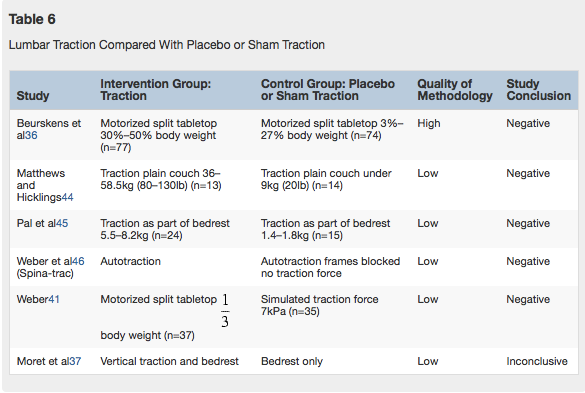Spondyloarthropathy--AS
Original Editors
Top Contributors - Adam Bockey, Elise Jespers, Elaine Lonnemann, Kim Jackson, Admin, 127.0.0.1, WikiSysop, Wendy Walker and Lucinda hampton
Search Strategy[edit | edit source]
Keywords: spondyloartrhropathy, ankylosing spondylitis, Reiter's syndrome, Marie-Strumpell disease, bamboo spine
Databases: PubMed, Pedro, Web of Science, emedicine
Definition/Description[edit | edit source]
Spondyloarthropathies are a diverse group of inflammatory arthritides that share certain genetic predisposing factors and clinical features. The group primarily includes Ankylosing Spondylitis, reactive arthritis (including Reiter’s syndrome), psoriatic arthritis, inflammatory bowel disease–associated spondyloarthropathy, and undifferentiated spondyloarthropathy.Cite error: Invalid <ref> tag; name cannot be a simple integer. Use a descriptive title Cite error: Invalid <ref> tag; name cannot be a simple integer. Use a descriptive title Level 5
The primary pathologic sites are the sacroiliac joints, the bony insertions of the annulus fibrosis of the intervertebral discs, and the apophyseal joints of the spine.Cite error: Invalid <ref> tag; name cannot be a simple integer. Use a descriptive title
Ankylosing Spondylitis (AS) also known as Marie- Strumpell disease or bamboo spine, is an inflammatory arthropathy of the axial skeleton, usually involving the sacroiliac joints, apophyseal joints, costovertebral joints, and intervertebral disc articulations.Cite error: Invalid <ref> tag; name cannot be a simple integer. Use a descriptive title AS is a chronic progressing inflammatory disease that causes inflammation of the spinal joints that can lead to severe, chronic pain and discomfort. In advanced stages, the inflammation can lead to new bone formation of the spine, causing the spine to fuse in a fixed position often creating a forward stooped posture.Cite error: Invalid <ref> tag; name cannot be a simple integer. Use a descriptive title
Clinically Relevant Anatomy[edit | edit source]
The vertebral column exists of 24 vertebrae: seven cervical vertebrae, twelve thoracic vertebrae and five lumbar vertebrae. The vertebrae are joined together by ligaments and separated by intervertebral discs. The discs exist of an inner nucleus pulposus and an outer annulus fibrosis, consisting of fibrocartilage rings.
Patients with spondyloarthropathy have a high propensity for inflammation at the sites where tendons, ligaments and joint capsules attach to the bone. These sites are known as entheses. Cite error: Invalid <ref> tag; name cannot be a simple integer. Use a descriptive titleLevel 5
The sacroiliac joint consists of a cartilaginous part and a fibrous (or ligamentous) compartment with very strong anterior and posterior sacroiliac ligaments. This makes the SIJ an amphiarthrosis with movement restricted to slight rotation and translation. Another specific feature of the SIJs is that two different types of cartilage cover the two articular surfaces. While the sacral cartilage is purely hyaline, the iliac side is covered by a mixture of hyaline and fibrous cartilage. Due to its fibrocartilaginous components, the sacroiliac joint is a so-called articular enthesis.Cite error: Invalid <ref> tag; name cannot be a simple integer. Use a descriptive titleLevel 1B
Epidemiology /Etiology[edit | edit source]
Ankylosing spondylitis (the most common spondyloarthropathy) has a prevalence of 0.1 to 0.2 percent in the general U.S. population and is related to the prevalence of HLA-B27. Diagnostic criteria for the spondyloarthropathies have been developed for research purposes, the criteria rarely are almost not used in clinical practice. There is no laboratory test to diagnose ankylosing spondylitis but the HLA-B27 gene has been found to be present in about 90 to 95 percent of affected white patients in central Europe and North America Cite error: Invalid <ref> tag; name cannot be a simple integer. Use a descriptive titleLevel 5
AS is 3 times more common in men than in women and most often begins between the ages of 20-40.Cite error: Invalid <ref> tag; name cannot be a simple integer. Use a descriptive title Cite error: Invalid <ref> tag; name cannot be a simple integer. Use a descriptive title (Level 5) Recent studies have shown that AS may be just as prevalent in women, but diagnosed less often because of a milder disease course with fewer spinal problems and more involvement of joints such as the knees and ankles. Prevalence of AS is nearly 2 million people or 0.1% to 0.2% of the general population in the United States. It occurs more often in Caucasians and some Native American than in African Americans, Asians, or other nonwhite groups.Cite error: Invalid <ref> tag; name cannot be a simple integer. Use a descriptive title AS is 10 to 20 times more common with first degree relatives of AS patients than in the general population. The risk of AS in first degree relatives with the HLA-B27 allele is about 20%.Cite error: Invalid <ref> tag; name cannot be a simple integer. Use a descriptive title
Characteristics/Clinical Presentation[edit | edit source]
add text here
Differential Diagnosis[edit | edit source]
add text here
Diagnostic Procedures[edit | edit source]
add text here related to medical diagnostic procedures
Outcome Measures[edit | edit source]
add links to outcome measures here (also see Outcome Measures Database)
Examination[edit | edit source]
add text here related to physical examination and assessment
Medical Management
[edit | edit source]
add text here
Physical Therapy Management
[edit | edit source]
add text here
Key Research[edit | edit source]
add links and reviews of high quality evidence here (case studies should be added on new pages using the case study template)
Resources
[edit | edit source]
add appropriate resources here
Clinical Bottom Line[edit | edit source]
add text here
Recent Related Research (from Pubmed)[edit | edit source]
see tutorial on Adding PubMed Feed
Extension:RSS -- Error: Not a valid URL: Feed goes here!!|charset=UTF-8|short|max=10
References[edit | edit source]
see adding references tutorial.








